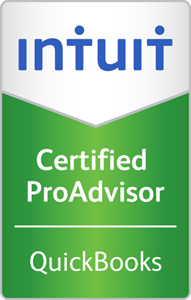With the end of 2017 rapidly approaching, many of us find ourselves in the midst of finalizing our holiday celebration plans with family and friends. Although this is the perfect time of year to slow down and celebrate 2017’s triumphs and successes with those closest to us, it is also a critical time for us to explore business planning strategies for the coming year. Setting aside some time to holistically evaluate our business strategies and milestones will help ensure we are postured to make the most of the opportunities which will present themselves in 2018.
Current Tax Reform Initiatives
Current tax reform legislation is a burning hot topic at the forefront of every business owner’s mind. Small businesses will especially want to watch key developments over the coming weeks with a keen eye on ensuring that opportunities to capitalize on reforms in the current tax code do not go unnoticed.
Our current presidential administration has taken a keen interest in mitigating what they see as the disproportionate tax burdens shouldered by individuals and small businesses over the past decade. If ratified and signed into law, proposed initiatives may very well ease 2017’s tax burden on small business and may weigh heavily on calculations for 2018’s tax strategy.
Despite rampant uncertainty concerning the specifics of the final bill, which will ultimately be signed into law, innovative small business owners are already preparing to seize the opportunities which are likely to arise in the near term. First and foremost, many are anticipating a significant decrease in the tax burden levied on small business owners. In order to successfully capitalize on this likely outcome, small businesses should seek to defer business income, when accounting makes this possible, to the new year in order to take advantage of the lower tax rates that are anticipated.
Prepare Yourself for a Successful 2018
There is no better time to take a moment and evaluate the effectiveness of your business model, and assess areas for improvement, than the end of the calendar year. As mentioned above, ongoing legislative debates may fundamentally alter the fiscal environment in which small businesses operate, so it is key to stay abreast of the latest developments. Also, please keep in mind that, for a second year in a row, federal income tax W-2s are required to be filed no later than the 31st of January, 2018, in a majority of states. Early preparation and planning will ensure that your penalties for late filing are kept to a minimum.
Tips for Small Business Owners
Small business owners may wish to consider some of the following strategies to take advantage of a myriad of financial tools currently at their disposal. Although intuitive, many small businesses fail to capitalize on simple tax savings options by controlling cash flow. Specifically, if a business has significant expenses projected to pay out in early 2018, it would be hugely advantageous to pay these expenses in December in order to potentially realize significant tax reduction for 2017. Conversely, if your business is able to delay billing invoicing until January, that revenue may be able to be declared on 2018 returns and potentially lower your tax burden.
In addition to the strategies mentioned above, small businesses may also benefit heavily from conducting a thorough examination of existing client-service strategies. Often, using a one-size-fits-all approach to servicing your clients’ requirements is not optimal. Instead, look to implement individualized strategies based on your client’s special circumstances, and then assign your top-tier performers to the clients which generate the abundance of your revenue.
Speaking of top-tier performers, in addition to controlling your billing/earning cycles and implementing individualized strategies to meet clients’ needs, many successful small businesses possess well-developed employee end-of-year bonus allocation practices.
A common bonus allocation strategy employed by successful businesses is to hold a bonus payout panel comprised of section supervisors or division heads. Each manager then advocates for the employees they supervise and the manager of the panel, often a senior in the company, leads the vote in which the group collectively determines how to best allocate bonus funds. Often, reducing the overall pool of bonus recipients to only the absolute top-tier performers will make the bonus more meaningful to the employee, regardless of the amount.
Best Credit Cards for Small Businesses in 2018
With an eye toward assessing your current performance and maximizing profits in 2018, small business owners should also be aware of credit card options designed specifically with the small business owner in mind. Not only do these cards permit the separation of personal from professional-related expenses, they earn a myriad of awards which can translate into money funneled back into your business. Chase’s Ink Business Cash credit card, for example, offers multiple cash back options for a wide range of purchases up to $25,000 per year. Additionally, American Express is offering the Simply Cash Plus Business credit card which allows small businesses to tailor the cash back options to fit their own unique business needs.








